The Pearl Cichlid, a treasure in the aquarium world. Let’s dive into the fascinating world of Geophagus brasiliensis, a species that has captured the hearts of many aquarists.
Table of Contents
In the scientific community, Geophagus brasiliensis is classified under the family Cichlidae, a large and diverse group of fish commonly known as cichlids. Research has shown that this species exhibits interesting behavior during resident-intruder interactions, as observed in a study published on ResearchGate.
But what makes this fish so interesting? For starters, its unique appearance, with a pearly sheen on its scales, sets it apart from other cichlids. Its relatively peaceful nature also makes it an attractive choice for community aquariums.
The scientific name Geophagus brasiliensis can be broken down into two parts: Geophagus, meaning “earth-eater,” and brasiliensis, referring to its origin in Brazil. This name reflects the fish’s feeding behavior, as it is known to sift through substrate in search of food.
In the market, you may also come across other names for this species, such as the “Brazilian Pearl Cichlid” or simply “Pearl Cichlid.” However, it’s essential to note that these names may refer to other similar species, so be sure to verify the scientific name when purchasing.
In its natural habitat, Geophagus brasiliensis is found in freshwater environments, typically dwelling near the bottom or middle of the water column. Its diet consists mainly of small invertebrates, algae, and detritus. In the aquarium, it’s best to replicate this diet with a mix of live and frozen foods.
As for behavior, this species is generally considered peaceful, but it can be territorial during breeding or when defending its food sources. It’s recommended to keep them in small groups or pairs, with plenty of hiding places and visual barriers.
Anatomically, Geophagus brasiliensis has a few notable features, including its long, pointed snout and vibrant blue-green stripes on its fins.
Here are a few fun facts about this species: did you know that Geophagus brasiliensis can grow up to 6 inches in length? They are also known to be relatively long-lived, with some individuals living up to 10 years in captivity.
As for their history, Geophagus brasiliensis has been a popular choice among aquarists for decades, with many breeders working to develop new color morphs and strains.
Pearl Cichlid Key Information
The Pearl Cichlid’s coloration is a true marvel of nature. Its pearly sheen is complemented by vibrant blue-green stripes on its fins, while its body shimmers with a subtle golden glow. As the light catches its scales, the colors seem to shift and change, giving the impression of an ever-changing tapestry. This dazzling display of color is just one of the many reasons why the Pearl Cichlid is a popular choice among aquarium enthusiasts.
| Family | Cichlidae |
| Origin | Brazil, South America |
| Price | $10-$20 |
| Common Names | Pearl Cichlid, Brazilian Pearl Cichlid |
| Variants | Several color morphs, including albino and leucistic varieties |
| Ideal Tank Size | 55 gallons or larger |
| Water Parameters | pH 6.5-7.5, temperature 72-82°F (22-28°C) |
| Lifespan | 8-10 years |
| Full Size | 6 inches (15 cm) |
| Natural Environment | Freshwater rivers and streams |
| Behavior | Generally peaceful, but can be territorial during breeding or when defending food sources |
| Habitat Preference | Bottom-dweller, prefers sandy or muddy substrate |
| Aquarium Decoration | Rocks, driftwood, and plants, with plenty of hiding places and visual barriers |
| Ideal Tank Mates | Peaceful community fish, such as neon tetras and harlequin rasboras |
| Fish to Avoid | Aggressive or fin-nipping fish, such as tiger barbs and fin-clipping tetras |
| Best Foods/Diet | Omnivorous, feeds on small invertebrates, algae, and detritus; live and frozen foods recommended |
| Disease | Prone to ich and other parasitic infections; regular water changes and quarantine recommended |
| Sex-Switch | Can change sex from female to male in the absence of a dominant male |
| Gender Differences | Males have longer fins and more vibrant coloration than females |
| Care Level | Moderate, requires regular water changes and attention to water parameters |
| Breeding Level | Challenging, requires specific water conditions and a compatible pair |
Ideal Tank Mates for Pearl Cichlid
When choosing tank mates for the Pearl Cichlid, it’s essential to select species that are compatible in terms of size, temperament, and water requirements. Here are ten ideal tank mates for the Pearl Cichlid, each with its unique characteristics and needs.
Blue Acara (Andinoacara pulcher)
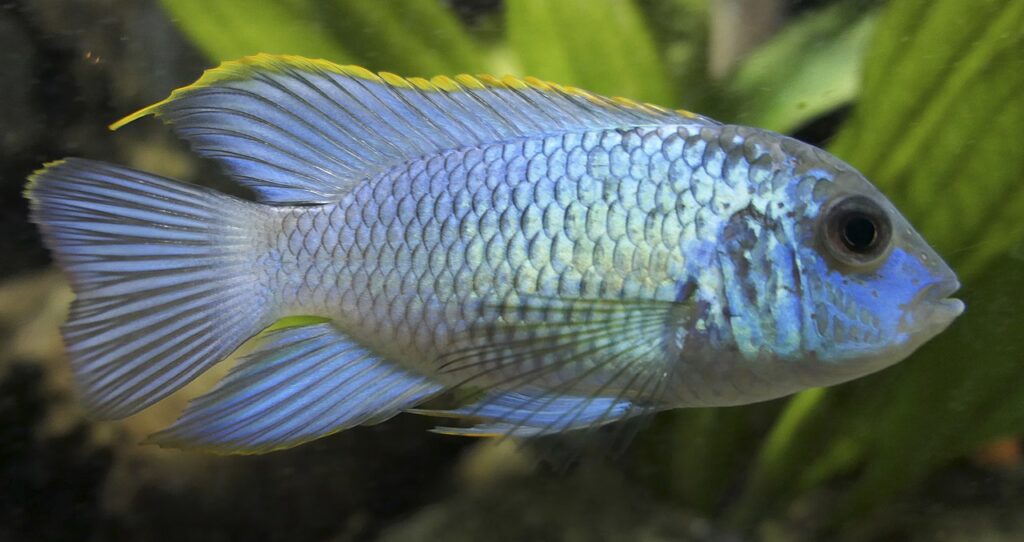
The Blue Acara is a peaceful cichlid that shares similar water requirements with the Pearl Cichlid. They are both native to South America and can thrive in a well-planted aquarium with plenty of hiding places. The Blue Acara’s calm demeanor makes it an excellent choice as a tank mate for the Pearl Cichlid.
| Common/Market Names | Price Range | Care Level | Behavior | Life Span | Max Size |
|---|---|---|---|---|---|
| Blue Acara, Electric Blue Acara | $10-$20 | Moderate | Peaceful | 8-10 years | 5-6 inches |
Discus (Symphysodon spp.)
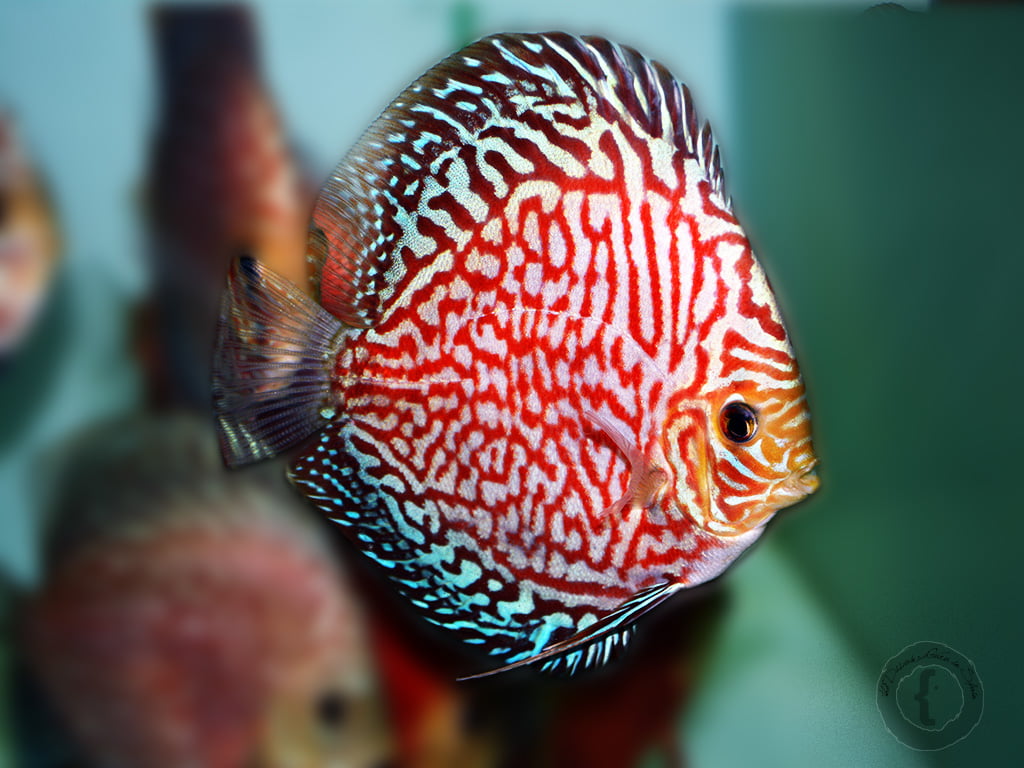
Discus are known for their majestic appearance and peaceful nature, making them an excellent choice as tank mates for the Pearl Cichlid. They require similar water conditions and can thrive in a well-maintained aquarium with plenty of hiding places.
| Common/Market Names | Price Range | Care Level | Behavior | Life Span | Max Size |
|---|---|---|---|---|---|
| Discus, Pompadour Discus | $20-$50 | Challenging | Peaceful | 10-15 years | 6-8 inches |
Angelfish (Pterophyllum spp.)
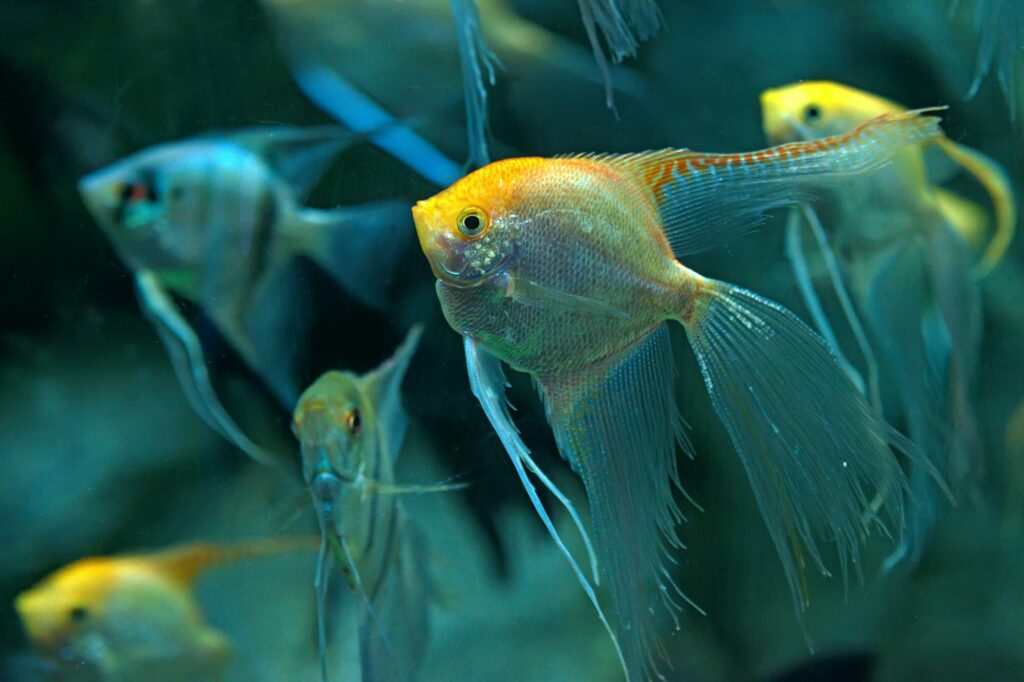
Angelfish are popular for their striking appearance and can make great tank mates for the Pearl Cichlid. They require similar water conditions and can thrive in a well-planted aquarium with plenty of hiding places.
| Common/Market Names | Price Range | Care Level | Behavior | Life Span | Max Size |
|---|---|---|---|---|---|
| Angelfish, Silver Angelfish | $10-$30 | Moderate | Semi-aggressive | 8-10 years | 6-8 inches |
Yoyo Loach (Botia almorhae)
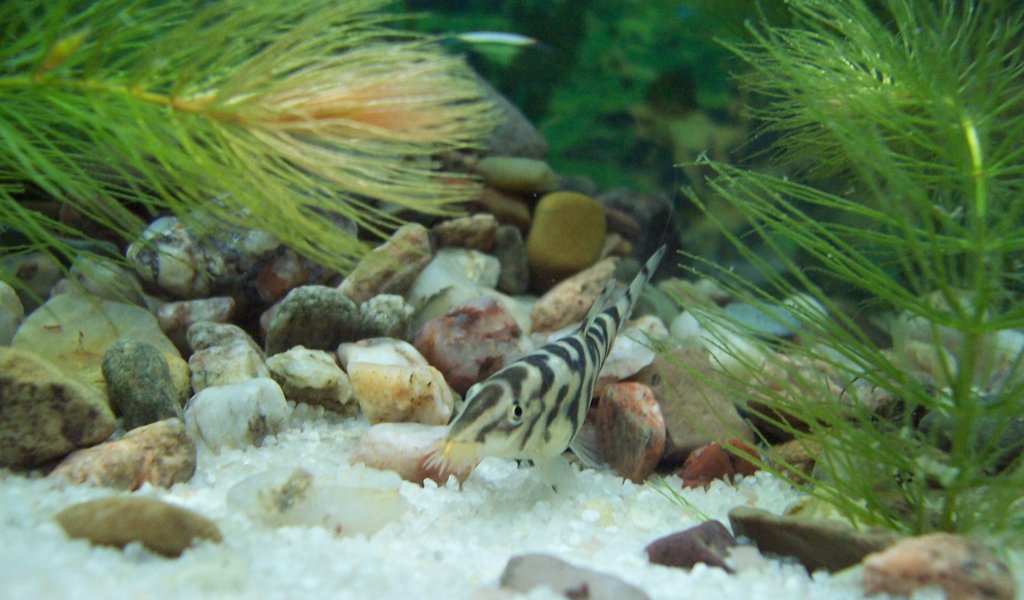
Yoyo Loaches are active and entertaining fish that can make great tank mates for the Pearl Cichlid. They are nocturnal and require plenty of hiding places, but can thrive in a well-maintained aquarium with similar water conditions.
| Common/Market Names | Price Range | Care Level | Behavior | Life Span | Max Size |
|---|---|---|---|---|---|
| Yoyo Loach, Pakistani Loach | $5-$10 | Easy | Active | 8-10 years | 6-8 inches |
Harlequin Rasboras (Trigonostigma heteromorpha)

Harlequin Rasboras are peaceful and active fish that can make great tank mates for the Pearl Cichlid. They are easy to care for and can thrive in a well-maintained aquarium with similar water conditions.
| Common/Market Names | Price Range | Care Level | Behavior | Life Span | Max Size |
|---|---|---|---|---|---|
| Harlequin Rasboras, Red Rasboras | $5-$10 | Easy | Peaceful | 5-7 years | 1-2 inches |
Lemon Tetras (Hyphessobrycon citrinus)
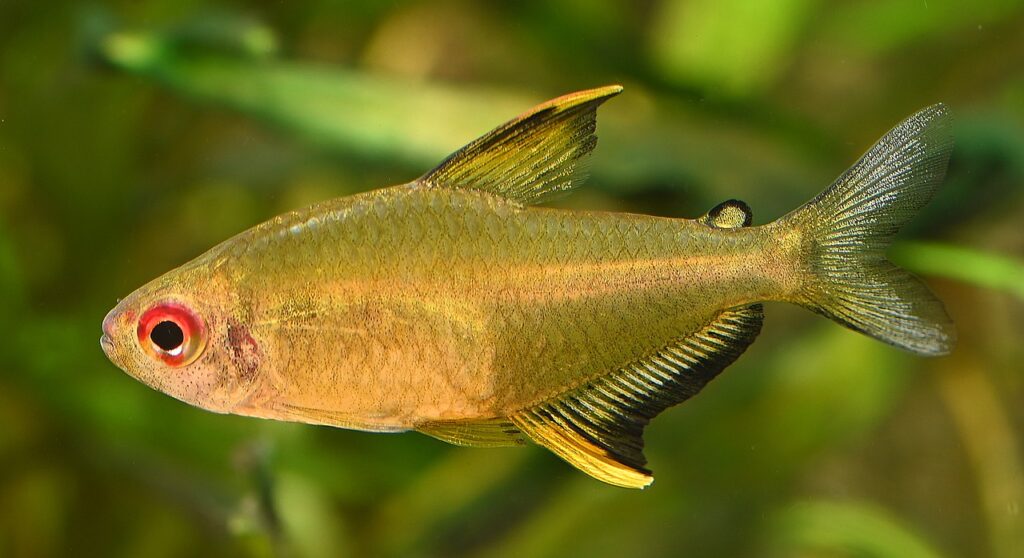
Lemon Tetras are small and peaceful fish that can make great tank mates for the Pearl Cichlid. They are easy to care for and can thrive in a well-maintained aquarium with similar water conditions.
| Common/Market Names | Price Range | Care Level | Behavior | Life Span | Max Size |
|---|---|---|---|---|---|
| Lemon Tetras, Yellow Tetras | $5-$10 | Easy | Peaceful | 5-7 years | 1-2 inches |
Corydoras Catfish (Corydoras spp.)
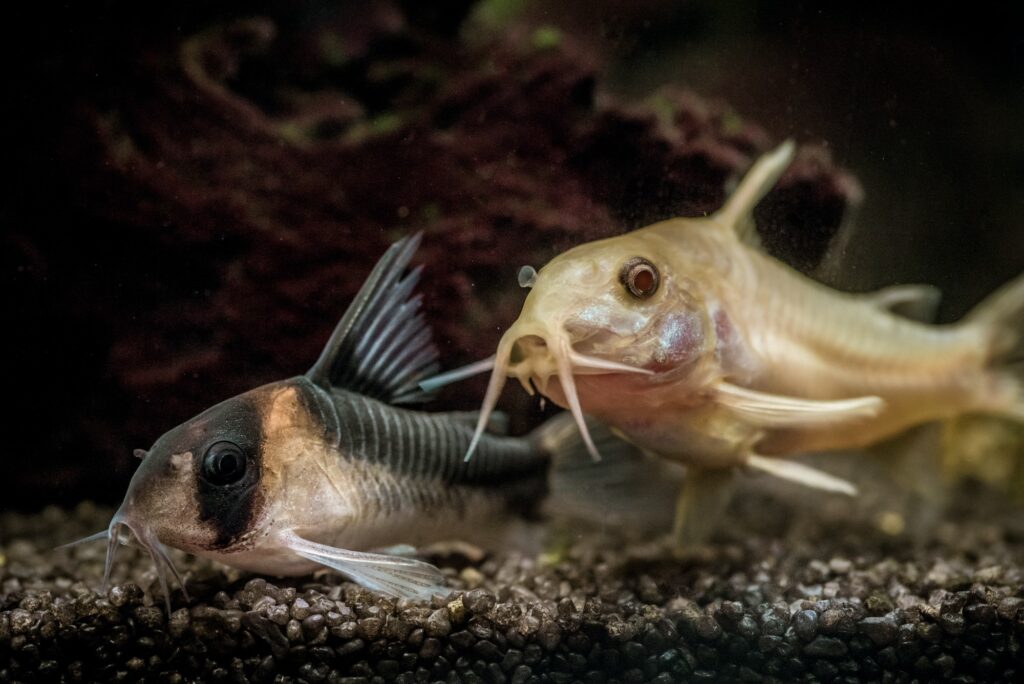
Corydoras Catfish are small and peaceful fish that can make great tank mates for the Pearl Cichlid. They are easy to care for and can thrive in a well-maintained aquarium with similar water conditions.
| Common/Market Names | Price Range | Care Level | Behavior | Life Span | Max Size |
|---|---|---|---|---|---|
| Corydoras Catfish, Cory Cats | $5-$10 | Easy | Peaceful | 5-7 years | 1-2 inches |
Zebra Danios (Danio rerio)
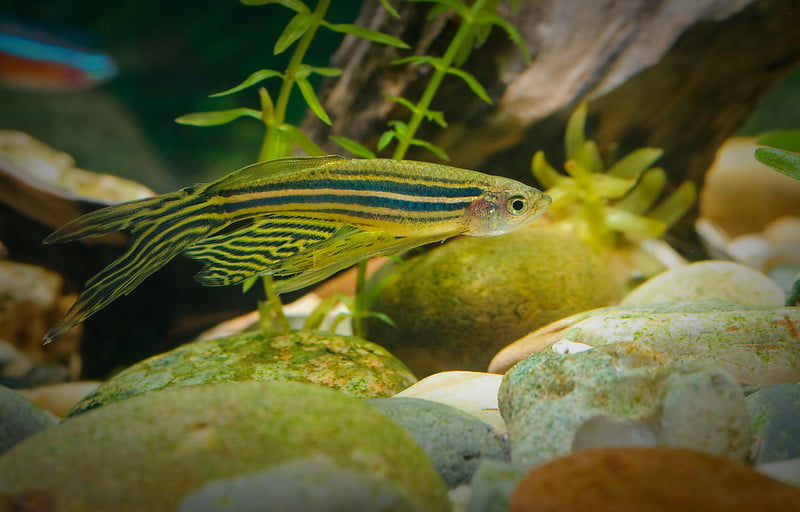
Zebra Danios are active and hardy fish that can make great tank mates for the Pearl Cichlid. They are easy to care for and can thrive in a well-maintained aquarium with similar water conditions.
| Common/Market Names | Price Range | Care Level | Behavior | Life Span | Max Size |
|---|---|---|---|---|---|
| Zebra Danios, Striped Danios | $5-$10 | Easy | Active | 5-7 years | 2-3 inches |
Cherry Barbs (Puntius titteya)
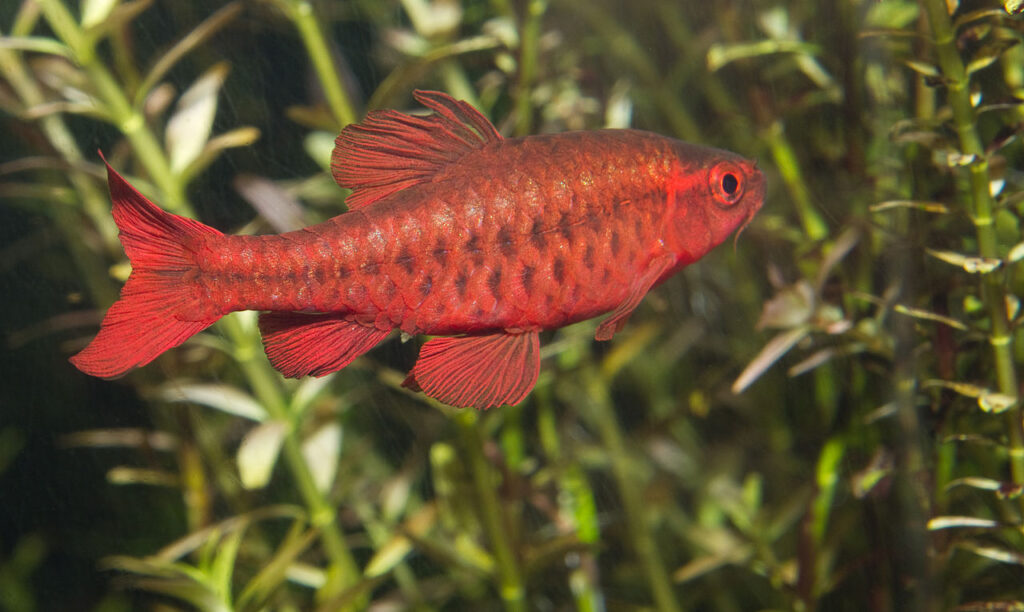
Cherry Barbs are peaceful and active fish that can make great tank mates for the Pearl Cichlid. They are easy to care for and can thrive in a well-maintained aquarium with similar water conditions.
| Common/Market Names | Price Range | Care Level | Behavior | Life Span | Max Size |
|---|---|---|---|---|---|
| Cherry Barbs, Red Barbs | $5-$10 | Easy | Peaceful | 5-7 years | 1-2 inches |
Dwarf Gouramis (Colisa spp.)
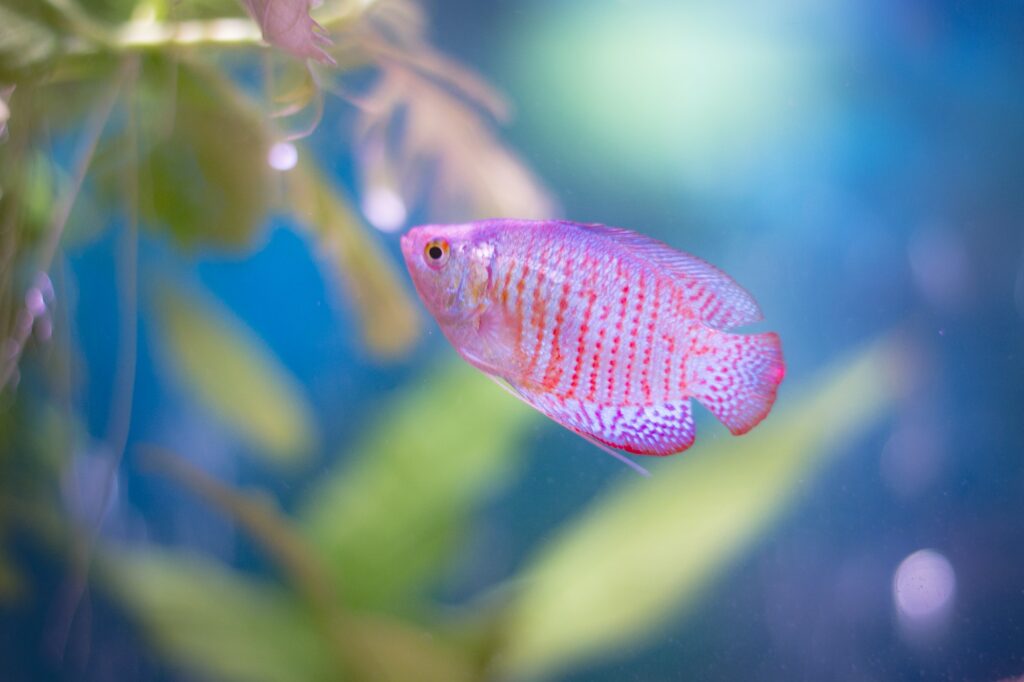
Dwarf Gouramis are peaceful and active fish that can make great tank mates for the Pearl Cichlid. They are easy to care for and can thrive in a well-maintained aquarium with similar water conditions.
| Common/Market Names | Price Range | Care Level | Behavior | Life Span | Max Size |
|---|---|---|---|---|---|
| Dwarf Gouramis, Pygmy Gouramis | $10-$20 | Easy | Peaceful | 5-7 years | 2-3 inches |
FAQs about Pearl Cichlid
How often should I feed my Pearl Cichlid?
Feed your Pearl Cichlid 2-3 times a day, only as much as they can consume within a few minutes. Overfeeding can lead to water quality issues and digestive problems.
Can I keep Pearl Cichlids with other cichlid species?
It’s generally not recommended to keep Pearl Cichlids with other cichlid species, as they can be territorial and aggressive towards each other. However, some peaceful cichlid species like the Blue Acara or the Dwarf Cichlid can be kept with Pearl Cichlids in a large enough tank with plenty of hiding places.
How do I sex Pearl Cichlids?
Sexing Pearl Cichlids can be challenging, but males tend to have longer fins and more vibrant coloration than females. Females also tend to have a more rounded belly than males.
Can Pearl Cichlids be kept in a community tank?
Yes, Pearl Cichlids can be kept in a community tank with peaceful fish species like neon tetras, harlequin rasboras, and corydoras catfish. However, avoid keeping them with aggressive or fin-nipping fish species.
How often should I change the water in my Pearl Cichlid tank?
Change 10-20% of the water in your Pearl Cichlid tank every week to maintain optimal water quality and prevent the buildup of toxins.
Can Pearl Cichlids be bred in captivity?
Yes, Pearl Cichlids can be bred in captivity, but it requires a separate breeding tank with specific water conditions and a compatible pair. The female will lay her eggs on a flat surface, and the male will fertilize them. The eggs will hatch after 2-3 days, and the fry will need to be fed infusoria or brine shrimp.
How do I prevent disease in my Pearl Cichlid tank?
To prevent disease in your Pearl Cichlid tank, maintain optimal water quality, provide a balanced diet, and avoid overcrowding. Regularly monitor your fish for signs of disease and take action promptly if you notice any unusual behavior or symptoms.
Can Pearl Cichlids be kept in a small tank?
No, Pearl Cichlids require a minimum tank size of 55 gallons to thrive. Keeping them in a small tank can lead to stress, disease, and a shortened lifespan.
How do I acclimate my Pearl Cichlid to a new tank?
To acclimate your Pearl Cichlid to a new tank, float the unopened bag in the tank for 15-20 minutes to allow the water temperatures to equalize. Then, slowly release the fish into the tank, making sure not to net or handle them excessively.
Can Pearl Cichlids be kept with live plants?
Yes, Pearl Cichlids can be kept with live plants, but they may dig up or eat some plants. Choose hardy plants like anacharis, java moss, or anubias that can tolerate their digging behavior.
How do I handle aggression in my Pearl Cichlid tank?
If you notice aggression in your Pearl Cichlid tank, separate the aggressive fish from the rest of the tank and provide plenty of hiding places and visual barriers. You can also try rearranging the tank decorations to reduce territorial behavior.